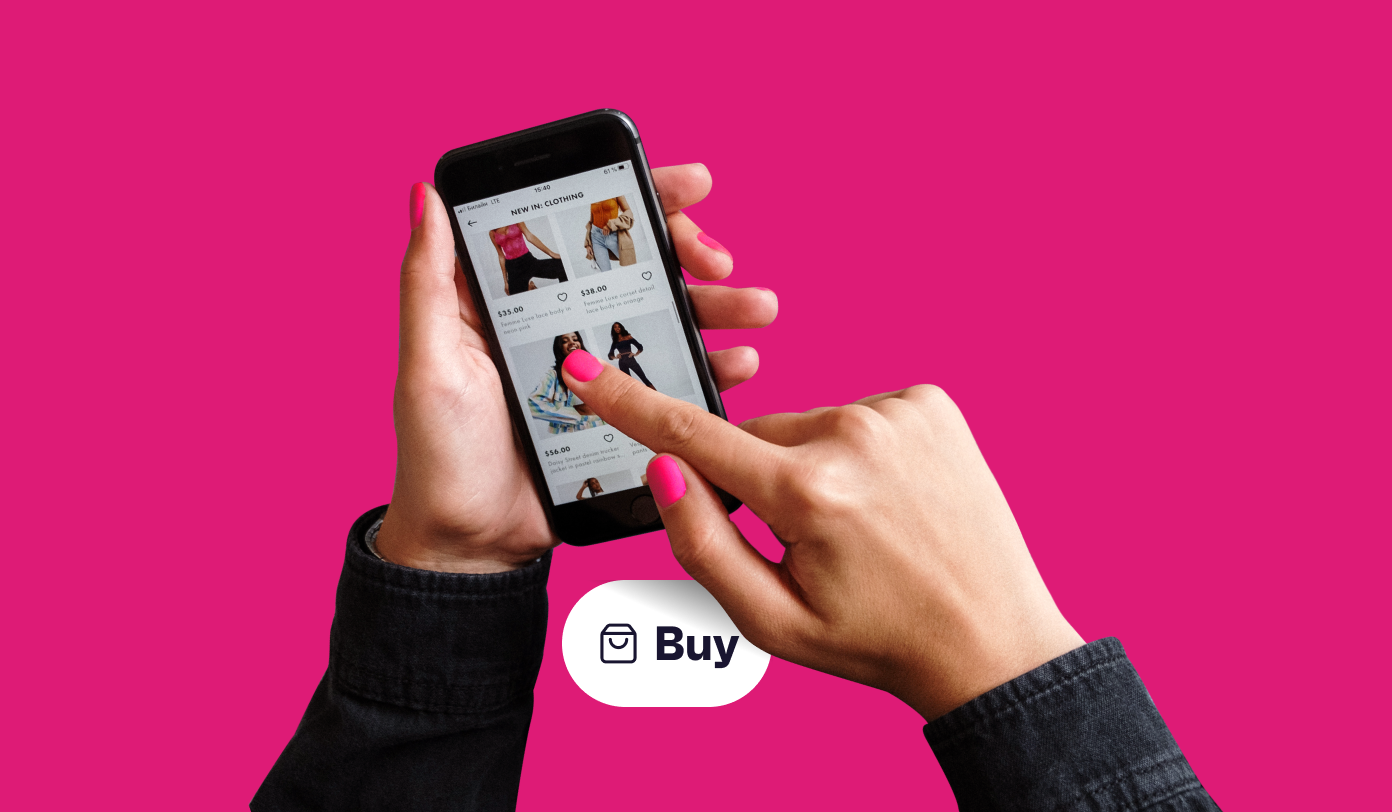This year, worldwide digital ad spending is expected to rise by 17.6% to $333.25 billion.
Advertising to people on social media makes perfect sense, since virtually all demographics and markets devote time to these platforms. The average user has 8.5 accounts and spends nearly 2.5 hours every day across them.
The strategy and tactics behind any social media advertising campaign should always be grounded in data. Regardless of whether you’re advertising in this space to raise awareness, drive website traffic, generate leads, or increase revenue:
The most successful brands know who their consumers are, and work backwards from there.
Investment in digital advertising now accounts for roughly half of the annual advertising spend globally. And for good reason: in the past month 40% of people have discovered a brand via social media from a sponsored post the brand had promoted.
But with so much money being spent, how can you be sure to get it right?
1. Start with survey data.
Market research is a huge determiner of success. Gathering robust consumer insight has long been the cornerstone of any marketing strategy and today, there’s no way around it.
Brands need to understand audiences as best they can to avoid wasting resources and bombarding consumers with unwelcome and irrelevant advertising. With so many of us exposed to brands providing personalized experiences at every touchpoint, blanket advertising just doesn’t cut it – we’ve been conditioned to expect more.
So what does it take to create relevant and targeted social media advertisements?
It starts with a brand being able to segment their audiences and develop data-driven audience personas.
A global insights platform comprised of powerful survey data goes beyond basic demographics, and gives brands visibility over consumer perceptions, interests and attitudes. This helps brands profile clusters of consumers in a less superficial, more accurate way.
Brands also need to know where their consumers are on social media, and what they’re doing there.
Since different groups use social media in different ways, insights give you the confidence of knowing where to host your advertising and why.
2. Shape your content to fit.
Don’t let your creatives put their heads together if you haven’t given them the context first. New concepts that aren’t grounded in data risk going off course and miss hitting the mark.
For example, the same ad won’t necessarily fly with all your target consumers, and your social media advertisements should reflect this.
The only way to create hyper-targeted campaigns is to segment your audience into well-defined groups and tailor the content to whoever’s on the receiving end.
Thankfully, brands can use the opportunities digital technology offers to personalize their content strategy. Aside from delivering a better brand experience, the case for personalized marketing stands to reason:
Businesses that adopt personalised marketing experience an average 19% increase in sales.
Video is blurring the lines between marketing and entertainment.
59% of consumers have been exposed to video content on Facebook, Twitter, Instagram or Snapchat.
Branded videos do well on social media because they’re watched by every demographic and favored by millennials and Gen Z in particular.
Live videos are also growing in popularity – 28% of consumers say they’ve watched live video streams on social media.
Brands can benefit from the power of live video to promote a greater sense of trust and transparency among consumers. Live videos also provide brands with access to real time feedback, as viewers can comment and ask questions while the video is playing.
People now go on social media to find entertaining content as much as they do to keep up with family and friends. The need to be entertained has spurred an influx of brands using storytelling to deliver their messaging in a more humanized, authentic way.
Influencer-brand partnerships aren’t slowing down.
Celebrity influencer posts are everywhere. Nearly a fifth of all consumers and a quarter of Gen Z use social media to follow celebrities.
Influencer marketing helps brands communicate their message persuasively, especially if the influencer is someone people look up to and who’s opinion they trust.
Influencers play an especially important role in brand discovery, the first stage of the purchase journey.
Our data indicates:
14% of digital consumers find out about new brands via celebrity endorsements.
Instagram is the most widely-used platform for influencer marketing, with 93% of all influencer campaigns hosted on the channel in 2018.
Influencers are a major part of social media advertising campaigns today because they help brands reach consumers directly.
3. Be mindful of ad-blockers.
Ad-blocking is a trend that’s grown in recent years.
Almost half of mobile/desktop ad-blockers say they block ads that are annoying and irrelevant.
A further 38% block ads on the basis that they take up too much screen space.
The abundance of ads on the internet is a complaint expressed by all age groups, and older age groups in particular.
But it’s not all bad news. We found that even ad-blockers find out about new brands via social media – 31% of them, to be exact.
Brands can still target ad-blockers effectively. Some demographics are more likely to use ad blockers than others, so it’s about using consumer insight to fine-tune the creative approach and reflect the interests of these specific people.
4. Learn from the brands getting it right.
In the past month, 9% of consumers clicked on a sponsored post on Instagram.
Why is this important? Social media advertising is the fourth most effective source of brand discovery after search engines, TV ads and word-of-mouth recommendations.
And at the end of the customer journey, great content, delivered to the right people, in places they’re most likely to see it, can be the final push a consumer needs in making the decision to buy.
These brands are already reaping the rewards from putting insight and fast moving consumer trends at the centre of their campaigns:
Allbirds: Facebook
Armed with the knowledge that 44% of consumers say advertising has inspired them to make eco-friendly purchase decisions, and keen to increase their awareness as a force for good in the fashion industry, Allbirds advertise on Facebook to promote their sustainable wool trainers.
Why it worked.
Timing is a big factor in the success of these posts. 52% of consumers see brands as responsible for the environment, hugely increasing the appeal of Allbirds shoes appearing in people’s newsfeeds. The ads have been encouraging conversation among a growing amount of eco-conscious consumers keen to do their bit for the environment and look good at the same time.
Source: Facebook.
Lonely Planet: Pinterest
Lonely Planet advertises heavily on Pinterest, and it works: the brand’s channel receives 3.5 million views every month. They’re well-known for creating inspiring travel-related pinterest boards and updating these frequently. With 3 in 4 travel pinners calling travel-related pins from brands useful, the sheer variety of specific-interest boards is what enables Lonely Planet to reach a broad audience cumulatively.
Why it worked.
Pinterest is the 11th most popular social media network, which might seem less viable for some, but Lonely Planet continues to focus their marketing efforts here. Why? The platform provides an opportunity to reach a niche but highly invested group of people wanting to research and plan their travel.

Source: Pinterest.
Glossier: Instagram
Glossier regularly uses instagram to advertise their beauty products and provide their audience with content, their “main driver of growth”. Their sponsored posts look almost identical to make-up tutorials that can be found on Instagram organically. The highly aspirational advertisements provide swift gratification at the click of a button – beauty and skincare lovers can purchase what they see in the ad without leaving Instagram’s platform.
Why it worked.
Sponsored posts that mimic the style of organic instagram posts can be a more seamless way for brands to advertise on social media. Above anything, Glossier want their ad to be a source of information and inspiration. The ads are highly appealing to Gen Z, who in 2019, rely on social media for brand and product research above search engines and word of mouth.
Source: YouTube.
World Wildlife Fund: Snapchat
The World Wildlife Fund wanted to raise awareness about endangered species among a younger audience. They focused their efforts on Snapchat, where usage is high among users under 29 and particularly among Generation Z. The sponsored ads showed pictures of animals under threat with the tagline “don’t let this be my #LastSelfie”.
Why it worked.
The ads were a sad wake up call about the fact that certain species have limited time left if nothing is done. Simple as it was, the use of the word ‘selfie’ was extremely attention-grabbing for this audience. These consumers (sometimes made fun of for taking multiple selfies per day) felt compelled to learn more about the future of these animals lives’ as a result.
Source: YouTube.
Over 40% of consumers use social networks to do research. To capitalize on this behavior, it’s up to brands to present the right content, in the right place, at the right time.
It’s less about advertising on every social media channel and more about using consumer insight to understand which ones work for your brand.





.webp?width=495&height=317&name=pink_thumb_graphs%20(1).webp)
.webp?width=495&height=317&name=pink_thumb_letter%20(2).webp)
